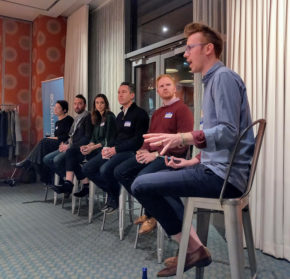Clickbait — we’ve all heard of it, we all know it when we see it (and, let’s be honest, still click on some of it), and we’ve all probably used it at least once. Clickbait, featuring headlines or descriptors like “You won’t believe what this teenage girl said to her teacher” or “7 Pictures of Celebrity Plastic Surgery Disasters You Absolutely Have to See,” surged in popularity among publishers in the age of social media, and has even formed the foundation of business models for online publishers like Buzzfeed and Upworthy. Sounds like clickbait is here to stay, right? Wrong.
Clickbait is widely ridiculed and derided by content professionals and consumers alike, and platforms like Facebook, which drive a significant portion of the traffic to clickbait-y sites, are starting to crack down. Is this the end of easily driving clickthroughs on posts? Definitely not. You just have to deliver valuable content after someone clicks — that shouldn’t be a tall order, right?
How software determines what is valuable and what is clickbait — and how that affects you
Figuring out what’s good and what’s not is pretty easy when you’re a person — you can read the article or look at the slideshow, for example, and know whether that content was actually worth taking the time to read. For search engines and social networking algorithms, however, the job is a bit different — these programs are measuring and evaluating content en masse on an entirely quantitative basis. So, how does this work?
Facebook was actually very clear about the checks they were putting in place to better filter content in the newsfeed. In addition to being tougher on the use of links outside of the link post format, Facebook will be more closely measuring user behavior after clicking links. From Facebook’s blog post:
“One way is to look at how long people spend reading an article away from Facebook. If people click on an article and spend time reading it, it suggests they clicked through to something valuable. If they click through to a link and then come straight back to Facebook, it suggests that they didn’t find something that they wanted.”
That’s not all. Facebook will also be factoring in the network’s engagement features:
“Another factor we will use to try and show fewer of these types of stories is to look at the ratio of people clicking on the content compared to people discussing and sharing it with their friends. If a lot of people click on the link, but relatively few people click Like, or comment on the story when they return to Facebook, this also suggests that people didn’t click through to something that was valuable to them.”
The bottom line isn’t exactly shocking: Facebook wants you to start creating better content and not trick its users into clicking on poor articles written just for the ad impressions. Of course, this isn’t a problem for you because you’re always putting out great content, but understanding the process behind the scenes can help you ensure that your content isn’t mistakenly penalized. The key is ensuring that users who click through to an article don’t bounce off shortly thereafter, and that users comment, like, share, etc. Your posting strategy should focus on quality over quantity — post only the content most likely to drive engagement instead of using Facebook or Twitter as a broadcast tool for every piece of content you publish.
Conveying value with clear, direct headlines (without gimmicks)
Drawing readers to your content en masse doesn’t require “tricking” people into clicking your links — just a little thought and planning to make sure the headline and social post content immediately convey value. There are two easy formats you can use repeatedly to get people to click through (and not regret it) — the “_ Tips for _____” article and the “How to _______” article.
These article formats naturally flow with how people search for information online. The volume of searches every day that start with “how to,” for example, is enormous. People are constantly scouring the internet for better ways to do the things they do every day or for how to do things they don’t know how to do. The best topics will be timely, insightful pieces that speak directly to the needs of your audience. For a site focused on Apple products, for example, a guide to using a new feature on the latest iPhone is a great starting point.
The headline is, of course, critical, and there are certainly plenty of pieces of clickbait positioned as “how to” articles that will annoy potential readers. “How to Change Your Life Forever”…”How to Quit Your Job and Make $10,000/week Working from Home”…”How to Get More Traffic”…you get the point. Generally, the more specific you can be, the better. If you hyper-target your headline, not only will it give you hyper-targeted traffic (that won’t bounce), it will be much better suited for ranking in search engines.
“How to Get Your Dream Job” — needs work
“How to Use LinkedIn to Get Your Dream Job” — better
Technically, you could even go further and get role-specific with something like “How to Use LinkedIn to Get a Great Marketing Job” to really go after the long-tail, but that’s up to you and how targeted you want to be with your audience. Similar strategies apply for “Tips and tricks” headlines.
“10 Tips for Making More Money” — pure clickbait
“5 Ways to Build Financial Security by Investing in Rental Properties” — fantastic…targeted and direct
The test you should run before publishing any piece of content is to re-read the headline and ask yourself if that would be how you would describe the article in one sentence if you were asked to summarize it. If not, whether that’s because it is too general or not entirely accurate, you should re-evaluate and try to come up with a title that is more targeted. If you always err on the side of specificity, you run little risk of bringing in untargeted traffic who might not see the value in your content that they were expecting.

